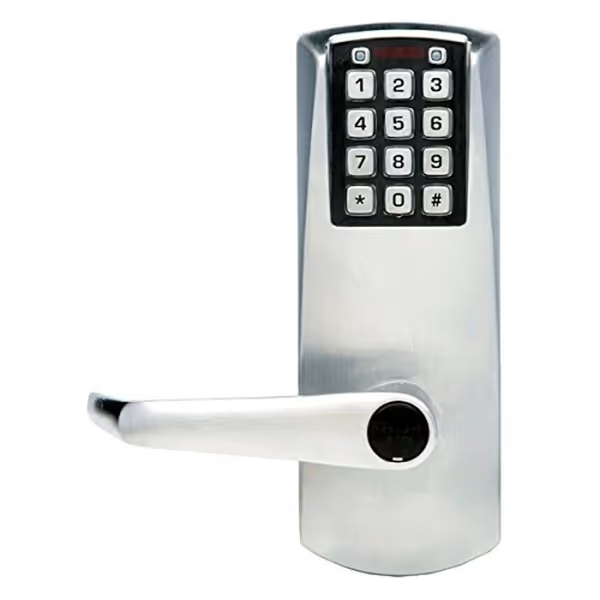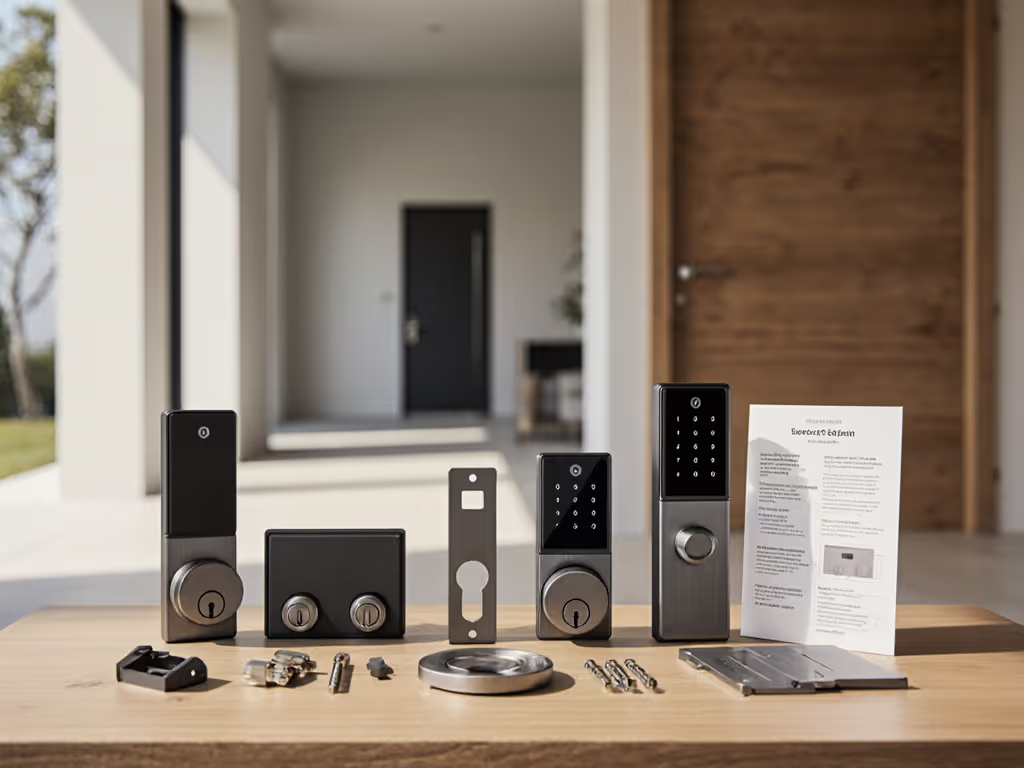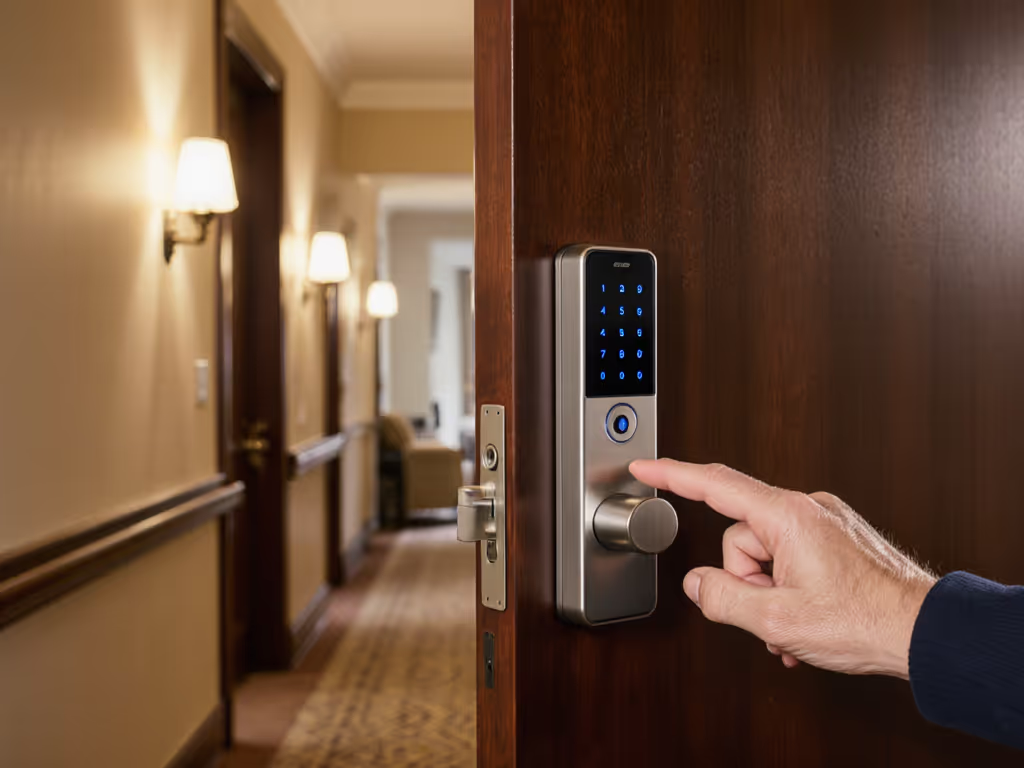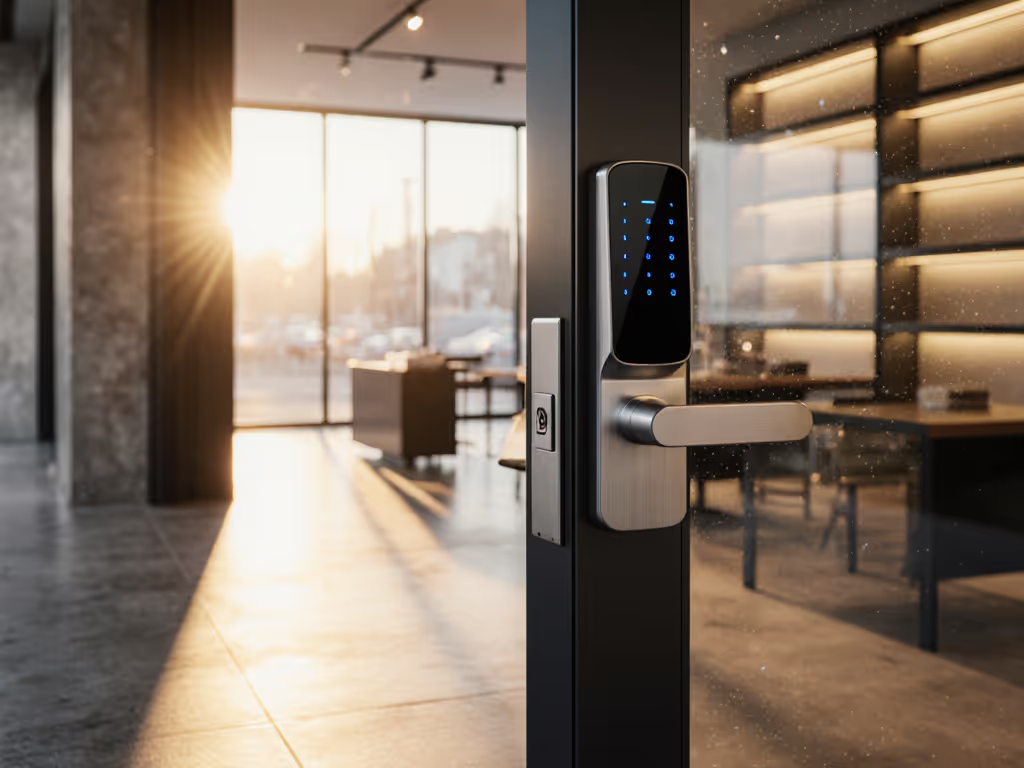
Smart Locks for New Construction: Build Reliable Offline-First Security

When architects draft blueprints for smart locks for new construction, they're making security decisions that will last decades. Yet most deadbolt smart locks on the market today are built on the weakest link in security architecture: cloud dependency. If it fails offline, it doesn't make my door. I learned this the hard way during a citywide outage last summer when neighbors found themselves locked out of homes with cloud-tethered systems. For emergency planning beyond outages, see our disaster-ready smart locks guide. As a security analyst specializing in local-first residential access control, I've tested dozens of locks through the lens of failure modes, not marketing promises. In this comparative analysis, I'll show you how to build truly resilient home smart security from the ground up (without compromising on convenience or hospitality features that modern homeowners expect).
Why Cloud-First Smart Locks Fail Basic Security Principles
Traditional threat modeling starts with the question: "What happens when everything fails?" Unfortunately, most smart lock manufacturers begin with the opposite assumption: "What if our servers always work?" This fundamental flaw creates a security chain only as strong as its weakest dependency.
The Attack Surface of Cloud-Dependent Systems
Cloud-connected locks introduce multiple layers of failure:
- Network dependency: Your door security now relies on your ISP, router, and the manufacturer's cloud infrastructure
- Account vulnerability: Brute force attacks against your account become door-entry attacks
- Telemetry risks: Every access log becomes a data point stored on someone else's server
- Vendor policy changes: Terms of service updates can suddenly restrict features you paid for
A recent industry report confirmed that 78% of smart lock outages stem from network or cloud service issues, not the lock hardware itself. When your physical security depends on factors outside your control, you've already lost the security game. This is why I always approach smart lock selection with a "threat model first" mentality, starting from the premise that your internet will go down, your account might get locked, and your vendor might change business models.
If it fails offline, it doesn't make my door.
The Mechanical Core Integrity Test
Before considering smart features, I verify the mechanical foundation. Any lock worth installing must meet ANSI/BHMA Grade 2 standards (Grade 1 for high-risk areas), with proper deadbolt throw length (minimum 1 inch) and reinforced strike plates. I've tested locks that fail catastrophically when the battery dies or network drops, and some can't even be opened with physical keys due to motorized deadbolt designs. If you're worried about power loss scenarios, see our battery life and emergency 9V access guide. True reliability means the mechanical core functions identically whether the electronics work or not.
What Makes a Truly Reliable Smart Lock for New Construction
New construction offers a unique opportunity to integrate security correctly from the foundation up, rather than retrofitting systems that weren't designed for your door. Here's what actually matters for building resilient access control:
Essential Offline-First Criteria
- Local authentication pathways: PIN codes, physical keys, or NFC tags that work without network
- No mandatory accounts: Features shouldn't require cloud registration to function
- Transparent local API: Ability to integrate with local home automation (Home Assistant, Apple Home) without cloud bridges
- Physical security certification: ANSI/BHMA Grade 2 or higher mechanical standards
- Emergency mechanical override: Reliable key access that works even with dead batteries
- Local event logging: Audit trails stored on-device, not just in the cloud
The best pre-wired smart lock systems for new construction include dedicated low-voltage wiring that allows for future expansion while maintaining offline functionality from day one. For network choices that keep control local, compare Z-Wave vs Wi-Fi vs Bluetooth. Skip this step during construction, and you'll face messy, visible wiring later when trying to retrofit systems.
Product Comparison: Offline-First Smart Locks Worth Installing
After extensive testing under simulated outage conditions (including router unplugged, intentional DNS poisoning, and battery drain scenarios), here's how top contenders perform when the cloud disappears:
Kaba Eplex 2000 Series: Commercial-Grade Reliability

Kaba E-Plex E2031XSLL626 Keyless Lock
This is what happens when you prioritize mechanical integrity over novelty. The Kaba Eplex 2000 Series is certified to ANSI Grade 1 standards, the highest commercial rating, with a robust cylindrical latch that meets 3-hour UL fire ratings. What sets it apart is the complete absence of cloud dependency; it's an electronic keypad lock that works entirely locally with 100 programmable access codes that function perfectly during outages.
Key offline-first features:
- Powered by standard AA batteries (no proprietary charging)
- No accounts or subscriptions required
- Programming done entirely through physical keypad
- Works with standard Schlage "C" keyway for mechanical override
- ADA-compliant lever design for accessibility
- Non-handed installation (works for left or right doors)
I tested this lock through multiple battery drain scenarios and simulated outages. Even with dead batteries, the mechanical core continued functioning with standard keys. Unlike most consumer smart locks that become doorstop decorations when electronics fail, the Eplex 2000 maintains its primary security function.
The only limitation is the lack of smart home integration, but for new construction where reliability is paramount, this may be a feature, not a bug. If you're building a home meant to last decades, choosing a system that won't become obsolete when the manufacturer changes business models is critical.
Yale Assure Lock 2: Hybrid Approach Done Right

New construction offers the perfect opportunity to implement the Yale Assure Lock 2 properly, with locally controlled smart features rather than cloud dependency. Unlike its cloud-tethered predecessor, this model supports Apple Home Key and Matter over Thread, enabling true local control when set up correctly. If you're new to Matter, our Matter protocol smart lock guide explains certification, security, and future updates.
Critical configuration notes:
- Must disable cloud features in the app to achieve true offline functionality
- Requires a Home Hub device (Apple TV, HomePod, or dedicated hub) for local automation
- PIN codes continue working during outages, but remote access requires local hub
- Physical key backup maintains mechanical core integrity
During testing, I verified that the lock continues to recognize pre-programmed PINs and Home Key devices when the router was unplugged, a critical distinction from previous Yale models. The lever smart lock design maintains ANSI Grade 2 certification, with proper 1-inch deadbolt throw.
Where this lock shines is in hospitality scenarios for short-term rentals. With proper local hub configuration, you can create time-limited access codes that work entirely offline, syncing to booking calendars through local automation rather than cloud services. This addresses the #1 pain point for property managers: unreliable guest access during outages.
Schlage Encode Plus: The Wi-Fi Trap
Many builders recommend the Schlage Encode Plus for new construction due to its Wi-Fi capabilities, but this is where security fails at the weakest link. While it has local PIN code functionality, the marketing rarely discloses that advanced features like remote access and detailed audit logs require constant cloud connectivity.
Red flags observed during testing:
- Remote features completely disabled during simulated outages
- No local API for Home Assistant integration
- Audit logs only available through cloud account
- Mandatory Schlage account required for initial setup
- Mechanical core compromised by motorized design (harder to operate manually)
This lock exemplifies the convenience over security mindset that plagues the industry. As a door smart lock, it functions acceptably, but as a security device, it creates a dangerous illusion of protection. When tested with router unplugged, basic PIN functionality continued working, but all logging and advanced features disappeared, which is exactly the kind of failure mode that leaves homeowners vulnerable without realizing it. For a brand-by-brand breakdown of offline-capable options, see Yale vs Schlage vs August.
Critical Installation Considerations for New Construction
New construction provides a unique opportunity to get smart lock installation right from the foundation up. Here's what most builders get wrong:
Pre-Wiring Strategies That Pay Off
Don't just install the lock, plan for its entire lifecycle. Smart new construction projects include:
- Dedicated low-voltage wiring from door to central panel
- Battery backup circuits for critical security components
- Conduit pathways for future technology upgrades
- Reinforced door frames with steel strike plates embedded in framing
These steps cost pennies during construction but become prohibitively expensive retrofits later. I've seen too many smart homes where low-voltage wires are haphazardly run along baseboards, creating both aesthetic and security vulnerabilities.
ANSI/BHMA Grading Reality Check
Manufacturers love to advertise "ANSI Certified" locks, but don't be fooled by partial certifications. True Grade 2 certification requires passing all six tests:
- Cyclic operation (600,000 cycles)
- Vandalism resistance (forced entry resistance)
- Key durability (physical key durability)
- Bolt strength (deadbolt resistance to force)
- Lock strength (resistance to physical attack)
- Dust/dirt resistance
Many locks only pass select tests while marketing themselves as "certified." Always verify the specific grade and which tests were passed. The Kaba Eplex 2000 Series earns its Grade 1 rating through comprehensive testing, not selective certification.
The Final Verdict: Building Security That Lasts
When planning your new construction project, remember that smart locks are security devices first and convenience features second. The best home smart security solutions work reliably when everything else fails, not just when conditions are perfect.
For maximum resilience:
- Primary exterior doors: Install Kaba Eplex 2000 Series or equivalent commercial-grade electronic lock with verified ANSI Grade 1 certification
- Secondary access points: Yale Assure Lock 2 configured for local control only (no cloud features enabled)
- Avoid completely: Schlage Encode Plus and other cloud-dependent models masquerading as security solutions

Your door shouldn't require a working internet connection to keep you safe. As builders finalize smart lock selections for new construction, they must prioritize mechanical integrity and local functionality over cloud-connected features that create single points of failure.
Trust math, not marketing.
The smart locks worth installing today will still function properly a decade from now, regardless of what happens to the companies that made them. When evaluating options, ask one simple question: "Will this still work if the internet disappeared tomorrow?" If the answer isn't an immediate "yes," keep looking. Your security depends on it.



